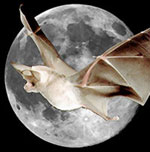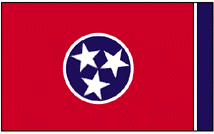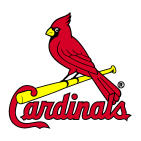[« Speaking of baseball birthdays today....] [We get comments.... »]
01/16/2006: As long as we're blogging baseball today....
My post on Dizzy Dean provoked a comment from Karen (who, as you can read below, has spread her wings and set up her very own bloghome at Peripetia):
And I thought ya was gonna post about Bruce Sutter and the Hall of Fame that ya sent me.Actually, she doesn't know it, but Karen's raised the specter of a rather interesting discussion going on in the baseball blogosphere. Among most of the commentators I've read, the consensus seems to be emerging that Sutter was a rather undeserving selection, whose election is a result of a peculiar set of circumstances this year.
:-)
As you KNOW I like That Split-fingered Fast Ball of his. A true Hall of Famer!!
Over at Baseball Prospectus (premium content; subscription required), Joe Sheehan made the case by some statistical comparisons between Sutter and fellow relievers Rich "Goose" Gossage and Lee Smith:
There are three relief pitchers on the ballot, and the only thing Iím certain of is that not all of them belong in the Hall. Bruce Sutter, Rich Gossage and Lee Smith had careers that spanned the transition from relievers as 120-inning firemen to relievers as 75-inning specialists. Smith is the all-time leader in saves, at least for one more year (Trevor Hoffman trails by 42), and has been garnering 35-40 percent of the vote in each of his three years on the ballot. The other two have been on the ballot far longer and are two of the top returning candidates.Following up on that analysis, Aaron Gleeman at The Hardball Times decided to do an "apples to oranges" comparison (of Sutter with starter Bert Blyleven) and then asked a few other pertinent questions):
Letís try something here. Sutter threw the fewest innings, by far, of the three pitchers. Letís use Sutterís career as a baseline, then subtract it from the careers of Gossage and Smith to see what they did above and beyond Sutterís performance. Come on, itíll be fun!
Same:W L G SV IP H R ER HR BB SO ERA PRAR WARP
Sutter 68 71 661 300 1042.3 879 370 328 77 309 861 2.83 507 55.2
Smith 68 71 661 300 1042.3 879 370 328 77 309 861 2.83 507 55.2
Gossage 68 71 661 300 1042.3 879 370 328 77 309 861 2.83 507 55.2
Different:W L G SV IP H R ER HR BB SO ERA PRAR WARP
Sutter 0 0 0 0 0 0 0 0 0 0 0 --- 0 0
Smith 3 21 361 178 247.0 254 105 106 12 177 390 3.86 202 22.2
Gossage 56 36 341 10 767.0 618 300 277 42 423 641 3.25 271 28.8
Do you see the problem here? Sutterís career value isnít just behind that of the other two; itís so far behind them that to induct Sutter is to set the bar in a place that forces you to vote for Gossage, Smith and a whole hell of a lot of other guys in the next 15 years. Smith, who no one really takes seriously as a candidate, vote totals aside, had Sutterís career and then three whole seasons on top of that of league-average relief pitching. Gossage had Sutterís career and another ten seasons of work. Each was, at minimum, 20 wins more valuable than Sutter in their careers.
The argument for Sutter largely rests on two poles: one is the idea that he was a pioneer of sorts, with him getting credit for the split-finger fastball, the one-inning closer, or both. Well, he didnít invent the former and the latter was a managerial decision designed to keep Sutterís weakness--fragility--from becoming an issue.
The other argument for Sutter is ďdominance,Ē the notion that he was a player who was a special one in his day, and that his value went beyond the numbers. Maybe thatís true, but if the other guy in the room is Goose Gossage, I fail to see how bringing ďdominanceĒ into the argument is going to help the guy who isnít Goose.
Sutter was a very good relief pitcher who had eight effective seasons, and whose career was over at 35. He came along under a set of circumstances that focused attention on his achievements, and helped to create the perception that he was a more important figure than he actually is. He doesnít measure up to the two relievers on the ballot, the limited standards set for Hall of Fame relievers, or the vast class of ďclosersĒ who will follow. I think Smith, whose career is shaped much differently, also falls outside the Hall. Heís the Tommy John or Jim Kaat of relievers.
There is absolutely no rational argument for having Bruce Sutter on a ballot, but not having Rich Gossage on it as well. You can vote for Gossage alone, you can vote for both or neither, but all ballots that list Sutter and not Gossage are fundamentally flawed, and reflect a lack of understanding of what the two pitchers accomplished in their careers.
As Joe Sheehan so cleverly put it over at Baseball Prospectus earlier this week, if you subtract Sutter's career totals from Gossage's career totals, you're still left with a guy who pitched 767 innings with a 3.25 ERA. Considering Sutter's entire resume consists of 1,042.1 innings of a 2.83 ERA, that's pretty amazing. That's the apples-to-apples comparison between two closers. Now let's compare Sutter to Blyleven:Since I lack mathematical competence and the skill to do the high level statistical magic that gurus like Sheehan and Gleeman do, I have to rely on a few pre-digested statistics (first developed by über sabermetrician Bill James in his book The Politics of Glory: How the Baseball Hall of Fame Really Works), and summarized in the relevant players' stat cards at the awesome Baseball Reference website. These pre-digested statistics (or "Hall of Fame metrics", as Baseball Reference calls them), are: the "Black Ink Test", the "Gray Ink Test", the "Hall of Fame Career Standards Test", and the "Hall of Fame Monitor".IP ERA SV W L WARP RSAA WS
Blyleven 4,970.1 3.31 0 287 250 140.4 344 339
Sutter 1,042.1 2.83 300 68 71 54.5 123 168
Gossage pitched 74% more innings than Sutter, but Blyleven makes that difference look miniscule. During his 22-year career Blyleven logged a grand total of 4,970.1 innings, which beats Sutter by a startling 3,928 innings or an equally ridiculous 377%. Now, a very compelling case can be made for "closer innings" being more valuable than "starter innings" on a per-inning basis, but we're talking about a gap of nearly 4,000 innings when Sutter's entire career barely lasted over 1,000 frames.
Broken down to the most simplistic terms possible, would you rather have 4,970 innings of a 3.31 ERA or 1,042 innings of a 2.83 ERA? Would you rather have 300 saves and 68 wins or 287 wins? And even if for some reason you chose Sutter's contributions in each of those two questions, you still haven't explained why his resume is better than Gossage's (not to mention Lee Smith's).
The Black and Gray Ink Tests are very closely related. Both are weighted statistical summaries of the number of times that a player either led his league (Black Ink) or placed in the top ten in his league (Gray Ink) in certain statistical categories; these categories are weighted so that players earn more points if they consistently lead in more important statistics (like, for pitchers, wins, strikeouts or ERA) instead of less important statistics (like games started).
The Hall of Fame Career Standards Test is designed to summarize a player's performance in such a way that one can compare him to Hall of Famers. The scale is designed so that the "average" hall of famer scores 50 points; the highest score on the scale (100) is reached only by the very best in the game. Finally, the Hall of Fame Monitor is more intended to assess active player and determine if they are likely to be inducted into the Hall (note that "likely to achieve induction" isn't the same as "deserves induction"). Basically, the career statistics measured by the HOF Monitor are weighted in such a way that an active player that has a score of 100 is quite likely to be inducted, while an HOF Monitor score of 130 or greater pretty much insures election.
Readers who are interested in the dirty details of these calculations can check the Baseball Reference Leaderboard Glossary (the Black Ink Test is defined about a bit below the halfway point; the remainder of the Hall metrics follow) where the tests are defined and formulae for calculating the scores set out.
Anyway, that being said, let's look at Bruce Sutter's Cooperstown metrics:
Black Ink: Pitching - 15 (138) (Average HOFer ~ 40)Certainly a good career, but note that Sutter falls far short of the Black/Grey Ink and HOF Standards metrics. He doesn't fall as far behind on the HOF Monitor, but he fails to break the magic "100" benchmark for likely enshrinement (for what it's worth, Sutter is hardly the worst on that score; though he wasn't a pitcher I'll note offhand that Phil Rizzuto, acknowledged by many commmentators to be a less than worthy Cooperstown inductee, scores only 87 on the HOF Monitor. I'm sure a bit of research could unearth even lower scores).
Gray Ink: Pitching - 30 (750) (Average HOFer ~ 185)
HOF Standards: Pitching - 17.0 (381) (Average HOFer ~ 50)
HOF Monitor: Pitching - 91.0 (114) (Likely HOFer > 100)
(Overall rank in parentheses)
By way of comparison, here's Goose Gossage's metrics:
Black Ink: Pitching - 9 (246) (Average HOFer ~ 40)Not too terribly far off from Sutter's in the Black/Gray Ink Tests and the HOF Standards measurement, but note that he does significantly break through the "likely HOFer" benchmark. And take a look at Lee Smith's metrics:
Gray Ink: Pitching - 41 (577) (Average HOFer ~ 185)
HOF Standards: Pitching - 19.0 (313) (Average HOFer ~ 50)
HOF Monitor: Pitching - 126.0 (60) (Likely HOFer > 100)
Black Ink: Pitching - 12 (177) (Average HOFer ~ 40)I'm reluctant to admit it, because I remember Bruce Sutter's contribution to the 1982 Cardinals World Series Championship team (the last World Series the Cards won, alas), but looking at the numbers, one is compelled to conclude that Sutter's election isn't one of the better decisions that the Baseball Writers' Association of America has made...
Gray Ink: Pitching - 48 (508) (Average HOFer ~ 185)
HOF Standards: Pitching - 13.0 (574) (Average HOFer ~ 50)
HOF Monitor: Pitching - 136.0 (50) (Likely HOFer > 100)
Len on 01.16.06 @ 07:38 PM CST












